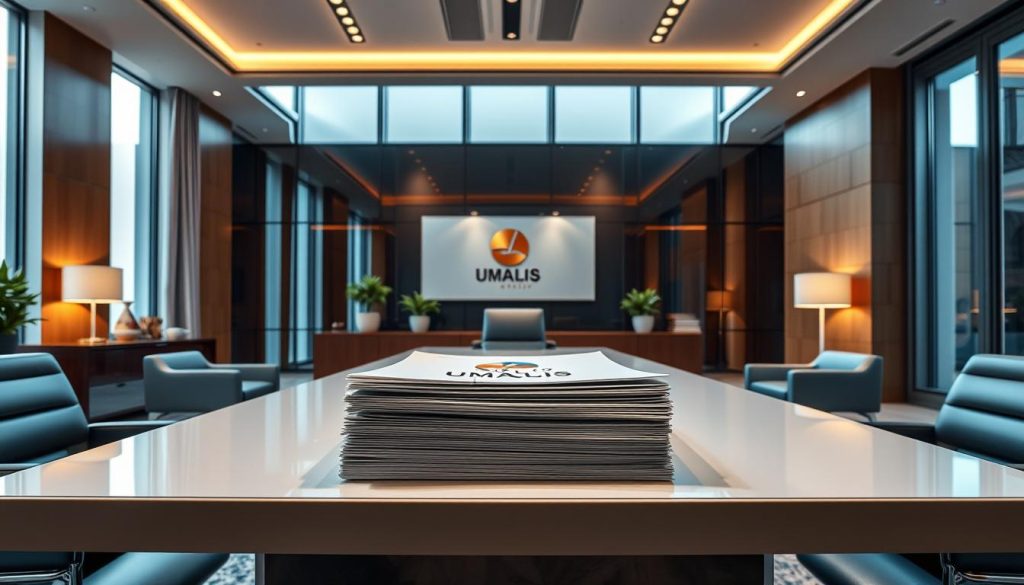As an independent expert, securing contracts, grants, and projects is crucial for your career stability and growth. A well-crafted project proposal is often the key to achieving this goal. It serves as a written document that outlines everything stakeholders need to know about your project, including timelines, budgets, objectives, and goals.
A good proposal not only summarizes your project details but also sells your idea, making stakeholders inclined to get involved. Effective writing is at the heart of this process, requiring a blend of forethought, audience understanding, and creative persuasion.
This comprehensive guide is designed to help you understand the fundamentals of creating a compelling proposal that clearly communicates your value proposition and persuades potential clients.
Table of Contents
Key Takeaways
- Understand the essential components of a well-structured proposal.
- Learn how to effectively communicate your value proposition to potential clients.
- Discover practical frameworks adaptable to various industries and proposal types.
- Gain insights into the strategic thinking required to position yourself against competitors.
- Master the art of proposal writing to increase your success rate in securing contracts and projects.
Understanding the Fundamentals of Proposal Writing
The foundation of a successful proposal lies in understanding its core elements and purpose. A well-crafted proposal serves as a roadmap for your project, outlining what your project is, why it’s important, how you plan to execute it, and the associated costs. It is a detailed pitch designed to convince stakeholders that your project is worth undertaking.
What Is a Proposal and Why It Matters
A proposal is essentially a persuasive document that outlines a project, solution, or service you’re offering to address a specific need or problem for a client or organization. For independent experts, proposals are critical business tools that bridge the gap between your expertise and clients’ needs, demonstrating how you can provide value. The fundamental purpose of a proposal is not just to inform but to persuade the reader that your approach is the most effective solution to their challenge.
Key Elements That Make a Proposal Successful
Key elements that make proposals successful include a clear understanding of the client’s needs, a well-defined scope of work, realistic timelines, appropriate pricing, and evidence of your qualifications. Your proposal should strike a balance between being comprehensive enough to answer all potential questions while remaining concise enough to maintain the reader’s interest. By understanding these fundamentals, you can approach each proposal with a strategic mindset, enhancing your chances of success.
Types of Proposals for Independent Experts
To navigate the complex landscape of proposal writing, it’s essential to familiarize yourself with the different types of proposals. As an independent expert, you will encounter various scenarios that require tailored approaches to proposal writing. Understanding these differences is key to increasing your chances of success.
Solicited vs. Unsolicited Proposals
The primary distinction lies between solicited and unsolicited proposals. Solicited proposals are responses to a client’s Request for Proposal (RFP) or formal invitation to bid. In contrast, unsolicited proposals are proactive pitches initiated without a formal request. The former requires a deep understanding of the client’s needs as outlined in the RFP, while the latter demands a keen insight into potential client needs and the ability to persuade them of your value proposition.
Formal vs. Informal Proposals
Proposals also vary in their level of formality. Formal proposals follow strict guidelines and are typically used for larger projects, often involving a detailed and structured approach. On the other hand, informal proposals are more flexible and suited for smaller engagements, allowing for a less rigid structure. The choice between a formal and informal proposal depends on the project’s scope, the client’s preferences, and the level of competition.
Continuation and Renewal Proposals
Another critical category includes continuation and renewal proposals, which are vital for maintaining ongoing relationships with clients. These proposals focus on extending existing work rather than initiating new projects. They require a deep understanding of the client’s evolving needs and the ability to demonstrate the continued value of your services.
The table below summarizes the key characteristics of the different proposal types:
| Proposal Type | Description | Project Size |
|---|---|---|
| Solicited | Response to RFP or formal invitation | Varies |
| Unsolicited | Proactive pitch without formal request | Varies |
| Formal | Follows strict guidelines | Larger projects |
| Informal | More flexible structure | Smaller projects |
| Continuation/Renewal | Extends existing work | Ongoing projects |
Understanding the nuances of each proposal type and adapting your approach accordingly is crucial for success as an independent expert. By mastering the different types of proposals, you can enhance your versatility and improve your chances of securing projects across various scenarios.
The Anatomy of an Effective Proposal
Crafting a winning proposal requires a deep understanding of its anatomy. Every effective project proposal follows a logical structure that guides the reader through your thinking process and builds a compelling case for your services.
Executive Summary: Your First Impression
The executive summary serves as the introduction to your project proposal. It should concisely capture the essence of your proposal, highlighting the key problem and your unique solution, enticing the reader to continue reading.
Problem Statement and Background
A well-crafted problem statement demonstrates your understanding of the client’s challenges. The background section provides context, demonstrating your knowledge of the client’s industry or situation, and previous attempts to address the problem.
Solution and Methodology
Your solution and methodology section should clearly outline your approach, explaining not just what you’ll do but how you’ll do it. This builds confidence without overwhelming the reader.
Budget, Timeline, and Deliverables
The budget, timeline, and deliverables section transforms your ideas into concrete commitments. It helps clients understand exactly what they’ll receive, when they’ll receive it, and at what cost. When defining your deliverables, include the end product or final objective of your project, a project timeline, and SMART goals that align with the deliverables you’re producing.
- Clearly define the end product or final objective of your project.
- Establish a realistic project timeline for when deliverables will be ready.
- Set SMART goals that align with the deliverables you’re producing.
By following this structure, you can create a comprehensive and compelling proposal that meets the client’s needs and stands out from the competition.
Proposal Writing: A Step-by-Step Process

Effective proposal writing involves a systematic approach that includes several key steps. By breaking down the process into manageable parts, you can create a compelling proposal that meets the client’s needs and stands out from the competition.
Research and Planning Phase
The research and planning phase is critical in proposal writing. It involves understanding the client’s requirements, researching the industry context, and analyzing the competitive landscape. This phase helps you tailor your proposal to the client’s specific needs and create a unique selling proposition.
Drafting Your Proposal
When drafting your proposal, it’s essential to follow a clear outline that addresses all required elements. Your proposal should have a logical flow that builds your case persuasively. Make sure to include key components such as an executive summary, problem statement, solution, methodology, budget, timeline, and deliverables.
Review and Refinement
The review and refinement stage is where good proposals become great ones. Set aside time to critically evaluate your draft, checking for clarity, persuasiveness, and potential objections. Consider having a colleague or mentor review your proposal before submission to catch any issues or opportunities for improvement.
Submission and Follow-up
The submission and follow-up steps are often overlooked but can significantly impact your success rate. Ensure a professional delivery and consider a thoughtful follow-up to demonstrate your attention to detail and genuine interest in the project.
Crafting a Compelling Executive Summary

An effective executive summary is the key to persuading stakeholders to read further. It serves as the introduction to your project proposal, summarizing the key elements and enticing the reader to continue.
Capturing Attention in the First Paragraph
To capture attention, your first paragraph should immediately address the client’s primary concern or opportunity. This demonstrates your understanding of their needs and shows that you are focused on what matters most to them. Avoid generic statements about your company or background; instead, lead with a powerful insight or observation about the client’s situation.
Summarizing Key Points Effectively
When summarizing key points, focus on the outcomes and benefits of your project rather than the processes and methods. Clients are more interested in the results you will achieve than in how you will achieve them. An effective executive summary follows a clear structure: problem statement, proposed solution, unique approach, key benefits, and a brief statement of qualifications.
| Key Elements | Description | Importance |
|---|---|---|
| Problem Statement | Clearly defines the problem your project addresses | High |
| Proposed Solution | Outlines the solution your project offers | High |
| Unique Approach | Highlights what sets your approach apart | Medium |
| Key Benefits | Summarizes the benefits of your project | High |
| Qualifications | Briefly states your relevant qualifications | Medium |
Defining Project Deliverables and Goals
Defining project deliverables and goals is a critical step in crafting a successful project proposal that meets client needs. As an independent expert, your ability to clearly articulate what you will deliver and how it aligns with the client’s objectives is crucial for winning projects.
When defining your project deliverables, you should include the end product or final objective of your project, a project timeline for when deliverables will be ready, and SMART goals that align with the deliverables you’re producing. This clarity helps stakeholders understand exactly what they are investing in.
Setting SMART Objectives
Setting objectives that are Specific, Measurable, Achievable, Relevant, and Time-bound (SMART) provides a framework that ensures your goals are clear and attainable. For instance, instead of stating that you will « improve » a process, you could state that you will « reduce processing time by 20 hours per month » or « increase conversion rates by 15%. »
- Clearly define what success looks like for your project.
- Ensure your objectives are aligned with the client’s needs and expectations.
- Use specific metrics or ideas to measure progress and success.
Creating Measurable Deliverables
deliverables means establishing specific criteria for success that both you and the client can use to evaluate the project’s outcomes. This includes setting key performance indicators (KPIs), milestones, or specific metrics relevant to the client’s industry. For example, if you’re working on a marketing proposal, your deliverables might include a certain number of social media followers or a specific increase in website traffic.
By focusing on measurable outcomes, you not only enhance the clarity of your proposal but also protect yourself as an independent expert by clearly establishing the scope of work and preventing « scope creep » during project execution.
Budgeting and Resource Allocation in Proposals
A well-planned budget and resource allocation strategy are essential components of a winning proposal. When drafting a proposal, it is crucial to include a detailed breakdown of the project budget, which encompasses all necessary expenses, from materials and supplies to team salaries and ad pricing.
To effectively allocate resources, one must consider the specific needs of the project. This involves not only identifying the required resources but also justifying their inclusion in the budget.
Creating Detailed Cost Breakdowns
Creating a detailed cost breakdown is vital for transparency and trust-building with potential clients. This involves breaking down the budget into its constituent parts, including costs associated with subcontractors, materials, software, travel expenses, and contingencies.
A comprehensive breakdown of costs helps stakeholders understand how their investment will be utilized, thereby enhancing credibility.
| Cost Category | Description | Estimated Cost |
|---|---|---|
| Personnel | Team salaries and benefits | $100,000 |
| Materials | Supplies and equipment | $20,000 |
| Marketing | Ad pricing and promotional expenses | $30,000 |
| Contingencies | Unexpected expenses | $10,000 |
| Total | $160,000 |
Justifying Your Budget Requirements
Justifying budget requirements involves connecting each expense to the value it delivers, explaining why each cost is necessary for achieving the project‘s objectives.
For independent experts, it is particularly important to clearly explain their pricing structure and rates, whether they charge hourly, by project phase, or with a fixed project fee.
By providing a clear and detailed budget, proposers can demonstrate their ability to manage resources effectively, thereby enhancing their credibility and increasing their chances of securing funding.
Tailoring Proposals for Different Industries
Tailoring your proposals to different industries is crucial for independent experts looking to expand their client base. Almost every B2B company will create a proposal at some point, and nonprofit organizations also create proposals when applying for grant funding. Understanding the nuances of various industries can significantly enhance the effectiveness of your proposals.
Adapting Your Approach by Sector
Each industry has its own language, priorities, and proposal expectations. When adapting your approach by sector, research industry-specific challenges, regulatory requirements, and common pain points that your services can address. For example, for technology clients, focus on innovation, scalability, and ROI; for healthcare, emphasize compliance, patient outcomes, and efficiency; for government contracts, highlight accountability, transparency, and adherence to procurement regulations.
Industry-Specific Proposal Requirements
Industry-specific proposal requirements might include particular formatting, certification requirements, case studies from similar organizations, or specialized knowledge demonstrations. Study successful project proposals in your target industry by reviewing public RFP responses, speaking with colleagues, or analyzing case studies to understand what resonates with decision-makers in that sector.
| Industry | Key Focus Areas | Proposal Requirements |
|---|---|---|
| Technology | Innovation, Scalability, ROI | Case studies, Technical specifications |
| Healthcare | Compliance, Patient Outcomes, Efficiency | Certification requirements, Clinical data |
| Government | Accountability, Transparency, Procurement adherence | Detailed budget breakdowns, Compliance documentation |
By understanding and adapting to these industry-specific requirements, you can significantly increase your chances of success. Remember, even within industries, organizations have unique cultures and priorities—always research the specific organization you’re targeting to further customize your approach.
Persuasive Writing Techniques for Winning Proposals

To write a proposal that truly wins, you must master the art of persuasive writing, understanding your audience, and presenting your ideas compellingly. Persuasion is crucial in a project proposal as it aims to convince the reader to support your project. Keeping your audience in mind is essential throughout the writing process.
Effective proposal writing involves more than just presenting project details; it’s about convincing people that your project is worth their investment. This requires a deep understanding of your audience’s needs and priorities.
Understanding Your Audience’s Needs
Understanding your audience’s needs requires thorough research beyond the initial request. It’s essential to consider the decision-makers’ priorities, concerns, and what success looks like from their perspective. Tailoring your language to your audience’s level of technical knowledge is also crucial; using industry jargon appropriately demonstrates expertise but can alienate non-technical readers if overused.
- Research the decision-makers’ priorities and concerns.
- Tailor your language to your audience’s technical level.
- Focus on benefits rather than features.
Using Evidence and Data Effectively
Using evidence and data effectively means selecting compelling statistics, case studies, and examples that directly support your claims and demonstrate your past successes. Incorporating testimonials or references from similar clients can build credibility and provide social proof of your capabilities.
- Use compelling statistics and case studies.
- Incorporate testimonials from similar clients.
- Balance logical arguments with emotional appeals.
Common Proposal Writing Mistakes to Avoid
When it comes to proposal writing, even seasoned professionals can stumble upon common pitfalls that may jeopardize their success. Crafting a winning proposal requires a deep understanding of the client’s needs, a clear and concise writing style, and a well-structured approach.
Technical Jargon and Complexity
Using excessive technical jargon and complexity can alienate readers who aren’t subject matter experts and obscure your main points. It’s essential to write with clarity as your primary goal, ensuring that your proposal is accessible to all potential readers, regardless of their technical background. Avoid using overly technical terms unless necessary, and provide explanations or definitions when needed.
Lack of Clarity and Focus
Lack of clarity and focus often results from trying to cover too much ground. A focused proposal that addresses the client’s specific needs is more effective than one that showcases everything you can do. Prioritize the client’s requirements and tailor your proposal accordingly, avoiding unnecessary details that may dilute your main message.
A common mistake in proposal writing is failing to provide a clear and concise overview of the project. To avoid this, consider the following best practices:
| Best Practice | Description | Benefit |
|---|---|---|
| Clearly define the problem statement | Ensure that the client’s needs are accurately understood | Enhances credibility and relevance |
| Provide a concise solution overview | Outline the proposed solution and its key components | Facilitates understanding and comparison |
| Outline a detailed project plan | Break down the project into manageable tasks and timelines | Demonstrates feasibility and preparedness |
By avoiding common proposal writing mistakes, such as excessive technical jargon and lack of clarity, you can significantly improve your chances of success.
Conclusion
A well-written conclusion can make a significant difference in the success of your project proposal. It should succinctly summarize the problem your project addresses and your proposed solution, emphasizing the potential impact.
Mastering proposal writing is crucial for independent experts seeking to secure projects and funding opportunities. By following a structured approach and continually refining your skills, you’ll increase your chances of success over time.
Remember, each proposal is an opportunity to refine your offering and messaging. By investing time in developing strong proposal writing skills, you’re laying the groundwork for long-term success in your field.
FAQ
What is the primary objective of a project proposal?
The primary objective of a project proposal is to outline a project’s goals, objectives, and requirements to secure funding or approval.
How do I determine the type of proposal I need to write?
The type of proposal you need to write depends on the project’s requirements and the client’s needs, such as solicited or unsolicited, formal or informal.
What are the key elements of a successful proposal?
A successful proposal includes a clear executive summary, a well-defined problem statement, a detailed solution, and a realistic budget and timeline.
How do I create a compelling executive summary?
A compelling executive summary captures the reader’s attention, clearly states the project’s objectives, and summarizes the key points.
What is the importance of a detailed budget in a proposal?
A detailed budget is essential to justify the project’s costs, demonstrate financial planning, and ensure transparency.
How do I tailor my proposal to different industries?
To tailor your proposal to different industries, you need to understand the industry-specific requirements, adapt your approach, and highlight relevant expertise.
What are common mistakes to avoid in proposal writing?
Common mistakes to avoid include using technical jargon, lacking clarity and focus, and failing to provide a clear problem statement and solution.
How do I ensure my proposal is well-structured and easy to follow?
To ensure your proposal is well-structured, use clear headings, concise paragraphs, and bullet points to present information in a logical and organized manner.





